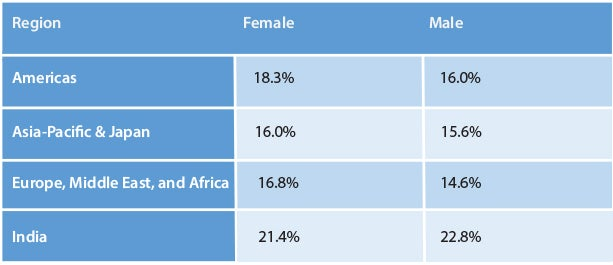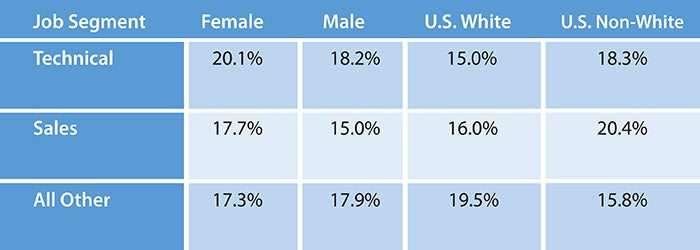Equality Beyond Pay

Adobe Stock Image: Gender equality.
Today is Equal Pay Day in the United States. The average woman works until this date to earn what the average man earned in the previous year. It’s hard to predict what impact the current job market turmoil from COVID-19 might have this year, but there is no question that women and U.S. people of color face a continued uphill climb when it comes to pay and representation.
At Adobe, we’re proud to have achieved global gender pay parity in October 2018, and we reaffirmed that parity last year. Building on the spirit of fairness and transparency in pay, we have more recently embarked on our next challenge which we call opportunity parity. Opportunity parity examines fairness in promotions and horizontal movement across demographic groups. Equality in the workplace goes well beyond how we’re paid — it’s also about the opportunities we have to move up or move around as we continue to grow in our careers.
This past September we released our first opportunity parity findings for global gender and U.S. race/ethnicity, and we’ve since updated the data for the full fiscal year. We have now done our next phase of analysis, which is examining our geographic regions and our major job segments. We have done this analysis using employee promotion data from the past four fiscal quarters, from quarter two of fiscal year 2019 through the first quarter of fiscal year 2020.
Regional promotion rates
Promotion rates by gender for employees based in Adobe’s major regions over the past four fiscal quarters were the following:

Job segment promotion rates
To examine the dynamic of employees who do different types of roles at Adobe, we grouped employees into three segments based on their individual job codes:
- Technical: Roles that build, document, or support computer software, hardware, or technology infrastructure (aligned with the definition of a technical workforce from AnitaB.org)
- Sales: Roles that are on a sales commission plan and do not qualify as “technical”
- All other: Roles that do not qualify as “technical” or “sales”
We believe this segment approach is the most accurate way to depict our organizational promotion dynamic, because it focuses on like jobs versus internal reporting hierarchies which shift over time.
Promotion rates by gender and U.S. race or ethnicity for employees by job segment over the past four fiscal quarters were the following:

Continuing our journey
While transparency in data is valuable, ultimately our opportunity parity initiative is designed to drive positive change in our organization, and we are using this data to help identify processes we can improve. For example, we’ve re-evaluated how we calculate promotions to make the data as accurate as possible — and we have uncovered gaps in our data process for tracking horizontal movement that we’re addressing this year. As we continue to examine other dimensions, we may find additional areas for focus. More than anything, however, we feel that driving this conversation internally is raising awareness and influencing behaviors without any formal mandates.
Everyone valuing equality and working toward achieving it every day is the key to change — whether it’s in pay, opportunity, or any other dimension that matters deeply to employees.
#AdobeForAll
Adobe.com/diversity
Methodology
Promotion rates were calculated by counting the number of employees who were promoted during the time period, divided by average headcount for the time period.
An employee is counted as having a promotion if they move up to a higher job level (most common); move from a job where they track their work hours to one where they do not track their work hours; or move from an individual contributor job to a people manager job.
Only employees with self-disclosed gender and race/ethnicity information were included in the analysis.